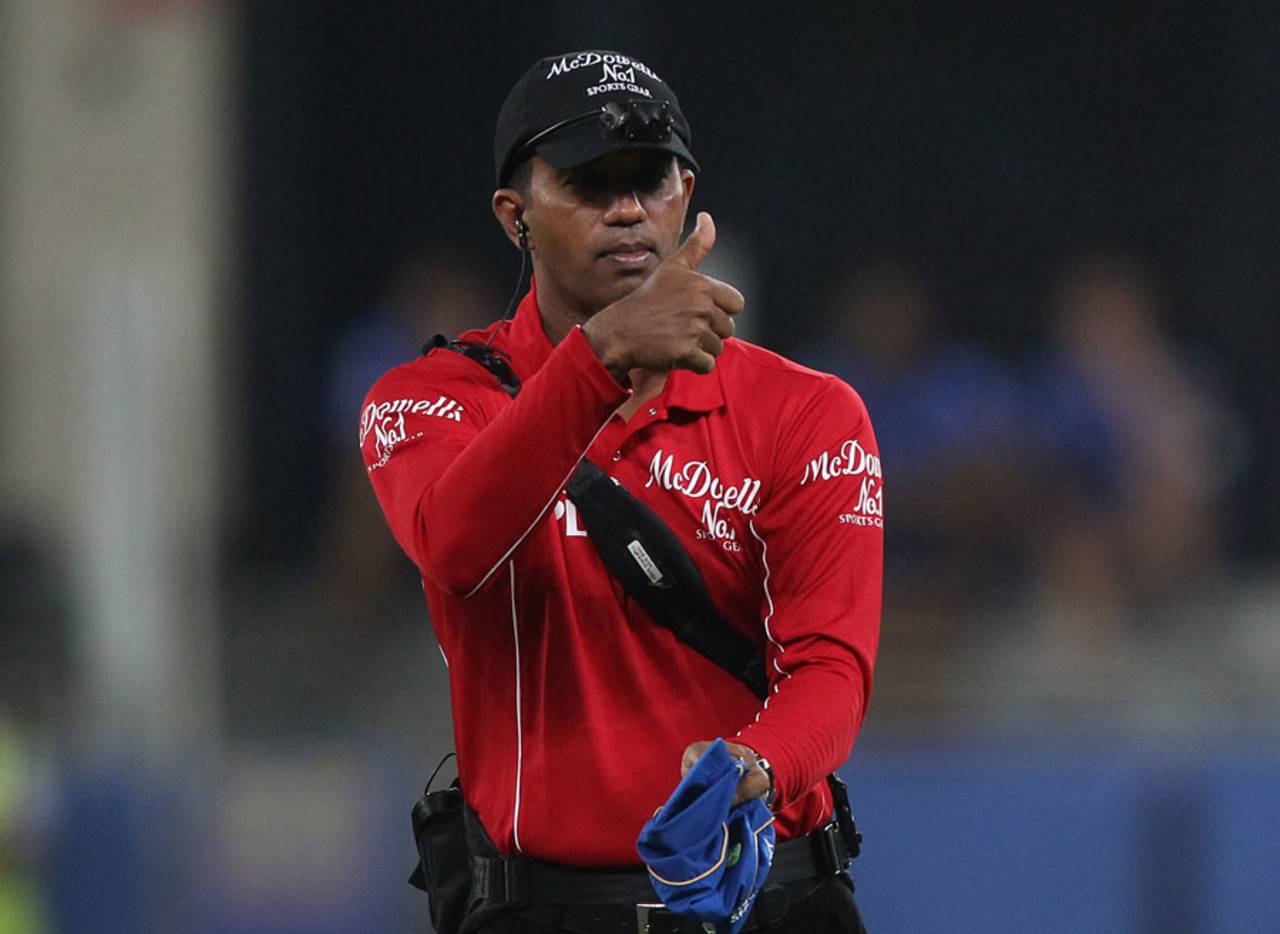TV innovations: enhancements or irritants?
While cricket coverage took a long time to become slick, today you see gimmicks designed to appeal to the casual viewer that only succeed in annoying the rest of us
Dave Hawksworth
23-May-2014

The hat cam: providing you with angles you'd rather not have • BCCI
For anyone who developed their love of cricket while watching the current era of retina-assaulting, all-angles-covered T20 network coverage, it might be hard to believe that there was once a simpler time when televised cricket matches would show every delivery bowled using a single camera position, placed roughly in line with the pitch and at just one end of the ground. Of course there were other cameras scattered around the boundary edge to follow the ball when it was played into the outfield, but the pitch itself was shown from a single viewpoint, with the action alternating between an over when the bowler was running away from the camera, followed by an over where the batsman had his back to you while he faced bowling from the other end.
This had the slight advantage of making it easier to identify which end of the ground a bowler was operating from, and the considerable disadvantage that for half the day's play there was a pretty good chance that the batsman would obscure your view of where the ball had pitched. And given the standard of fitness among players at the time, there were one or two batsmen who were obscuring quite an acreage.
Looking back now, it seems like an obvious and fairly straightforward move to add an extra camera that would give a consistent and clear view of the pitch. Yet despite this innovation having first been tried during the late '70s, in Kerry Packer's World Series Cricket, it was years later that the BBC came round to incorporating the idea into their coverage of the game in England. Even then, the change was announced with the same tone of earnest solemnity that a parent would use to explain the concept of death to a small child. And for some time after its introduction a caption proclaiming which end of the ground was being used would be regularly displayed to prevent viewers from becoming dangerously disorientated. Clearly this was not an era when every television network was entirely comfortable with change.
There are those watching who would appreciate the occasional wide-angle shot of the ground that lingers just long enough for you to register the field placings being used
Fast-forward to the present day and sports broadcasters now seem to be involved in an innovation arms race, each trying to outdo the other with the latest gimmick or camera angle. Much of what has been developed over the last decade has enhanced the game. Some of it having a fundamental impact - Hawk-Eye has reinvigorated the art of spin bowling, or at least a spin bowler's hope of getting an lbw; while Hot Spot has successfully spread dissent over umpiring decisions to a third official.
But there's also a fair degree of innovation just for the sake of doing something new. Last year Sky introduced their new spin-rev counter, which told us something, possibly something useful, but which was most effectively used to emasculate any spinner who couldn't regularly "get it in the red zone".
So far this English season we have already seen an umpire "hat cam", which provides high-definition close-ups of bowlers collecting their sweaters, and a shaky, slightly out-of-focus alternative view on lbw appeals. Sky has also imported a percentage win-prediction system from New Zealand called WASP. By the end of Tuesday's T20 game between England and Sri Lanka not even the Sky commentary team cheerleaders sounded convinced of its worth. Although to be fair, anyone willing to name their cricket-related product after a pointless irritant that ruins summer is showing an outrageous degree of self-confidence.
For the most part, the various innovations have vastly improved cricket coverage. But it's worth remembering that one of the reasons the BBC resisted change all those years ago was a belief that a significant part of their audience would be knowledgeable enough about the game to take a close interest in which end of a ground was being used by which bowler. That contrasts with so many modern innovations in coverage that appear designed to appeal to the casual viewer. There's nothing wrong with that instinct to explain and expand the game to a wider viewership, but it's also worth remembering that there are those watching who would appreciate the occasional wide-angle shot of the ground that lingers just long enough for you to register the field placings being used, and who, when England need 28 off 12 balls with another over from Lasith Malinga to come, can work out the odds for themselves, thank you very much.
Dave Hawksworth has never sat in a press box or charged a match programme to expenses